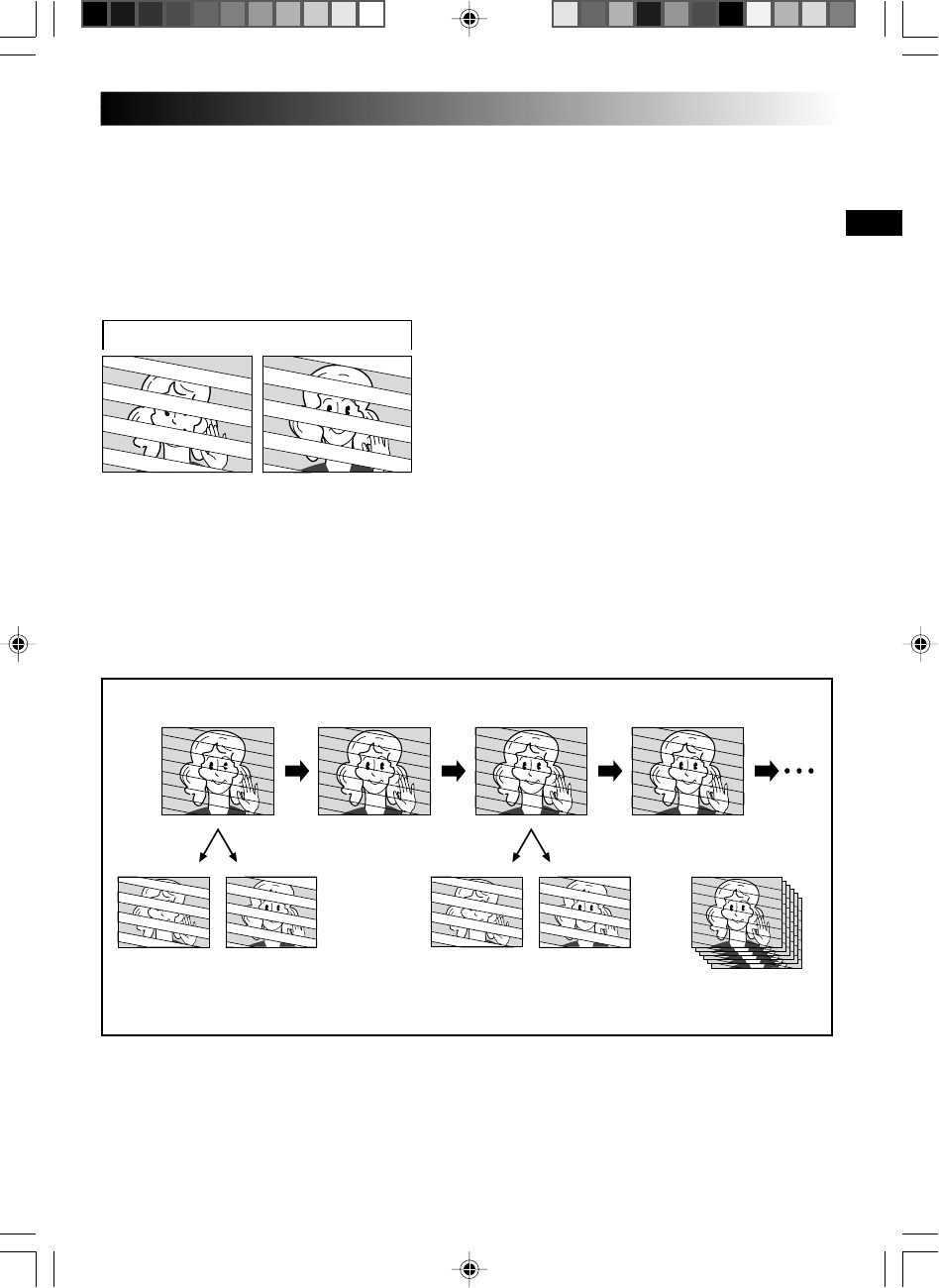
EN23
Description of Progressive Scan CCD
Progressive Scan is a special image sensing method which, unlike conventional interlace scanning, is able to
pick up all the lines of picture information in one Scan. Since the Progressive Scan CCD is capable of
outputting 50 full Frames* per second — twice the amount of conventional systems — it is able to deliver a
high quality picture even when its output signal is converted to a format that can be viewed on a TV screen.
*A PAL TV screen image is composed of 25 Frames per second. 1 Frame is made up of 2 Fields.
Scan C
Scan A
1 Frame
Scan B
Skip
Scan D
Skip
Scan A
1. Regular shooting of moving images
Records 25 odd and 25 even image Fields, for a total of 50
per second. Since there is a time lag between an odd and
even Field, when they are combined to make 1 Frame the
part of the image that is moving appears as image jitter.
However, during normal playback, the moving picture
looks smooth and natural.
2. Progressive mode shooting of moving images (Progressive Mode Recording ੬ pg. 22)
Scan A is recorded, divided into an odd- and even-number Field, and then Scan B is skipped. Scans C and D
are handled in the same way as Scans A and B, as illustrated below, thereby recording 25 Frames per second.
Since each recorded odd- and even-number Field originates from the same Scan there is no time lag between
them, and so when they are combined into a Frame and a still image is displayed on a TV or PC monitor the
picture does not look jittery. However, when moving images are played back, the picture can look unnatural.
Even-number
Field
25 Frames per second
Odd-number
Field
Odd-number
Field
Even-number
Field
Scan B
VMD22 EN(02/33) 29/08/00, 14:4123


















